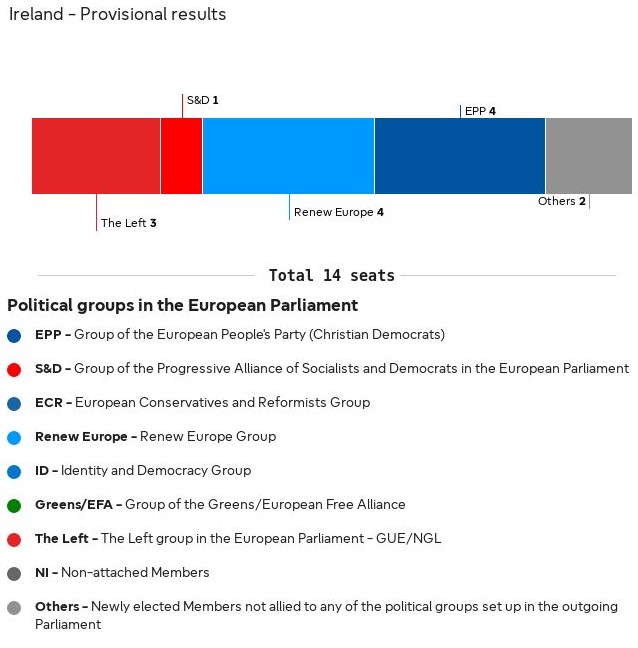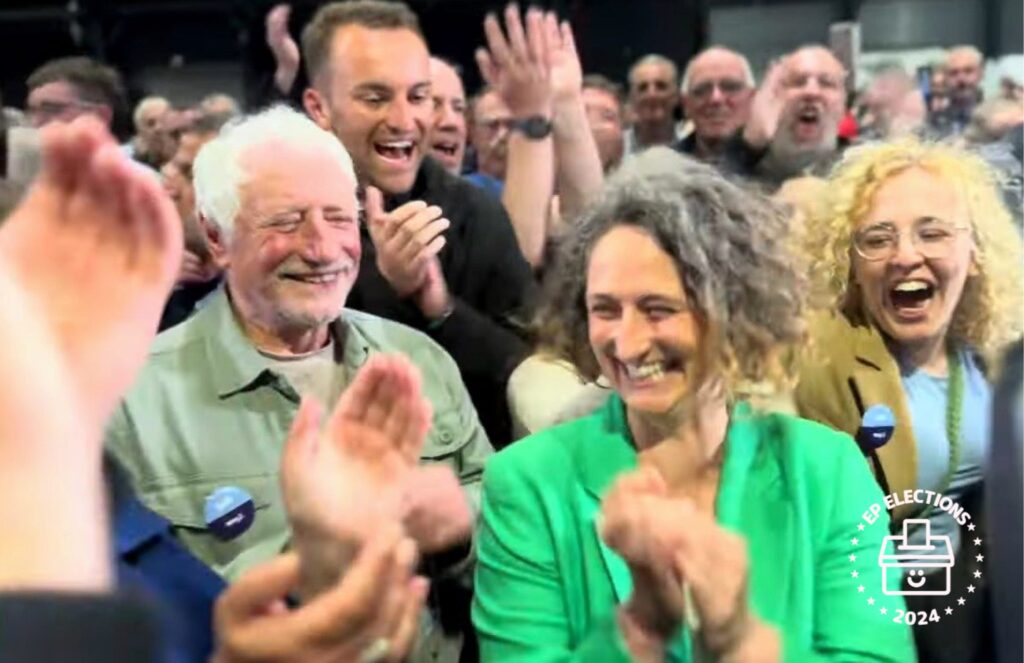The European and municipal elections in Ireland have bolstered the traditional parties of government and, still more, independent candidates.

Source: Verian for the European Parliament
https://results.elections.europa.eu/en/national-results/ireland/2024-2029/
The tallying of the European election ballots in Ireland continued until 14 June, which was due on the one hand to an electoral system (Single Transferable Vote/STV) that is as democratic as it is hard to count; on the other hand, it was the result of municipal elections held simultaneously and tallied first. Voter participation was at about 50% and thus more or less the EU average.
Compared to the 2019 European and municipal elections, which were a bitter defeat for Sinn Féin (SF), this time Sinn Féin’s republicans were able to increase their vote slightly. However, a good 11% in the European and municipal elections is a real disappointment for a party which garnered 24% of votes in the February 2020 national elections and was polling at 30 to 35% in autumn 2023. It is true that these levels were lower in recent months but no one expected such a poor result. Nevertheless, the lesson from the 2019/20 election should be borne in mind: even Irish politics is now marked by a tendency to stronger fluctuations in election results than was previously typical for the country. The outcome of the next national parliamentary elections – to be held in March 2025 at the latest but probably earlier – is therefore still open.
SF won 102 out of 949 municipal seats as against 248 and 245 seats for the two traditional parties of the democratic political right or centre right, Fianna Fáil (FF) and Fine Gael (FG), each receiving 23% of the votes. A fifth of the municipal seats went to independent candidates. The left alliance People Before Profit/Solidarity (PBP) won 13 seats, the Labour Party 56, the social democrats (who had split from the Labour Party) got 35 and the Greens 23 seats.
The 14 Irish Members of the European Parliament (MEPs) are divided into four seats each for FF and FG (each of which garnered a good 20% of votes), 2 for SF (11%), 1 for the Labour Party (nearly 4%) and 3 for independent candidates who, together with other parties, reached 34% of votes. One of the independents is on the left, but still the total results for the centre-left and left parties are modest (PBP for instance got 2% of votes).
FF and FG under the new Prime Minister Simin Harris did better than had been expected in autumn 2023 when SF dominated the polls. The election winners are above all the new parties, alliances, and single candidates, which had been growing continually stronger in Ireland though seldom as strong as in 2024. Independent Ireland (with one MEP and 23 municipal seats) stands out as a new formation whose identity is clearly right-wing and an expression of the growing opposition to immigrants, especially refugees. However, Ireland still has no right-wing extremist party in its parliament, making it now one of the very last European countries without one. The growing anti-migrant sentiment is a problem especially for SF.
References
- RTÉ | election result page
- RTÉ | 2024 election page
- Irish Times | European election page
- Irish Times | local election page
- European Parliament | election results
- Florian Weis/Johanna Bussemer: “Ein unaufhaltsamer Aufstieg? — Vom Erfolg Sinn Féins und dem Ende des »two and a half party system« in Irland”; in Sozialismus Heft Nr. 3 | März 2020 | 47. Jahrgang | Heft Nr. 449
Cover photo: Sinn Féin’s politician Lynn Boylan elected again to the European Parliament. She had already served as an MEP for the Dublin constituency in the 2014-2019 legislature, not in the most recent one. Source: Sinn Féin’s YouTube channel, video “Lynn Boylan elected for Dublin in European Elections”, 12 June 2024 (screen capture).



